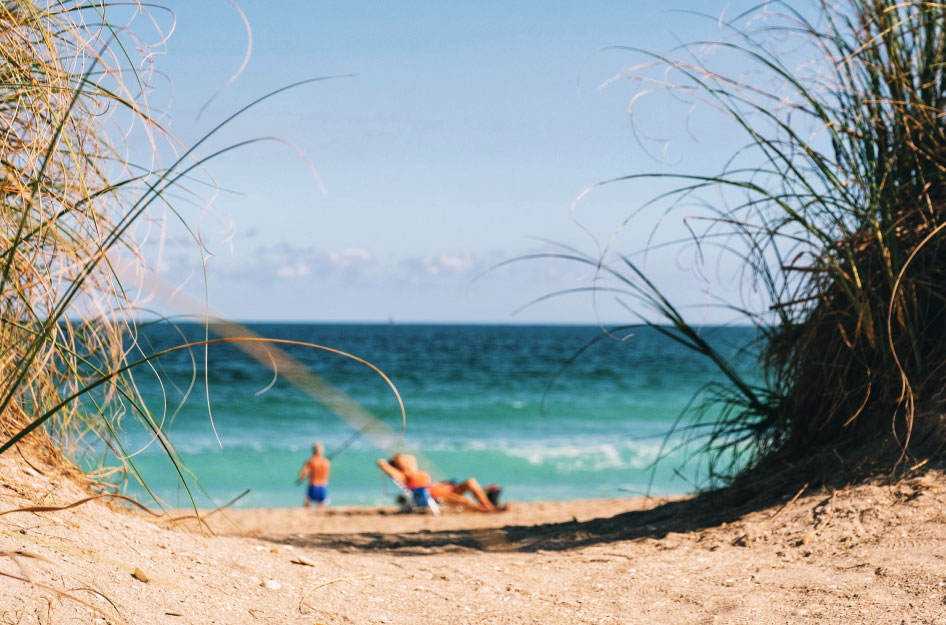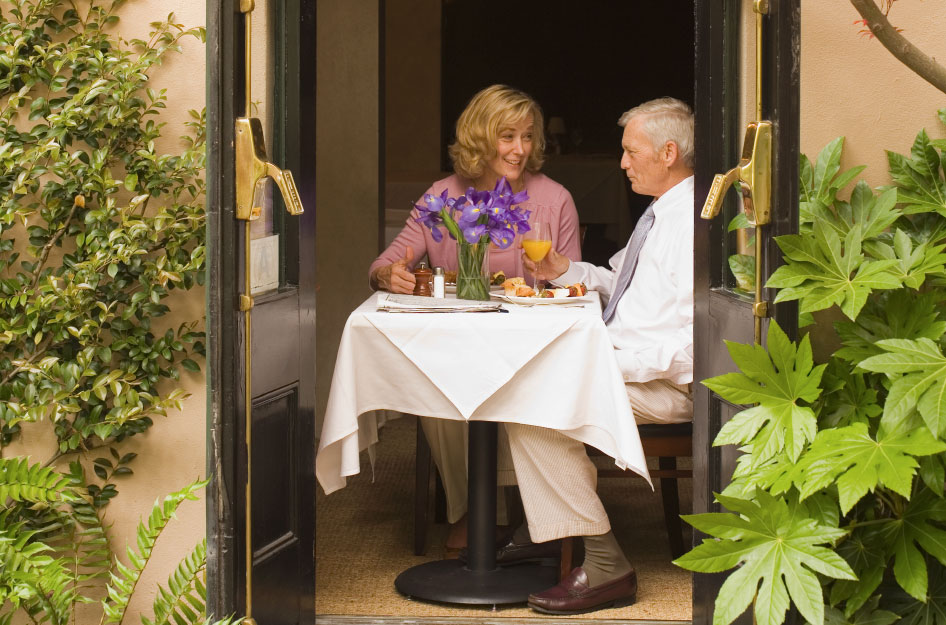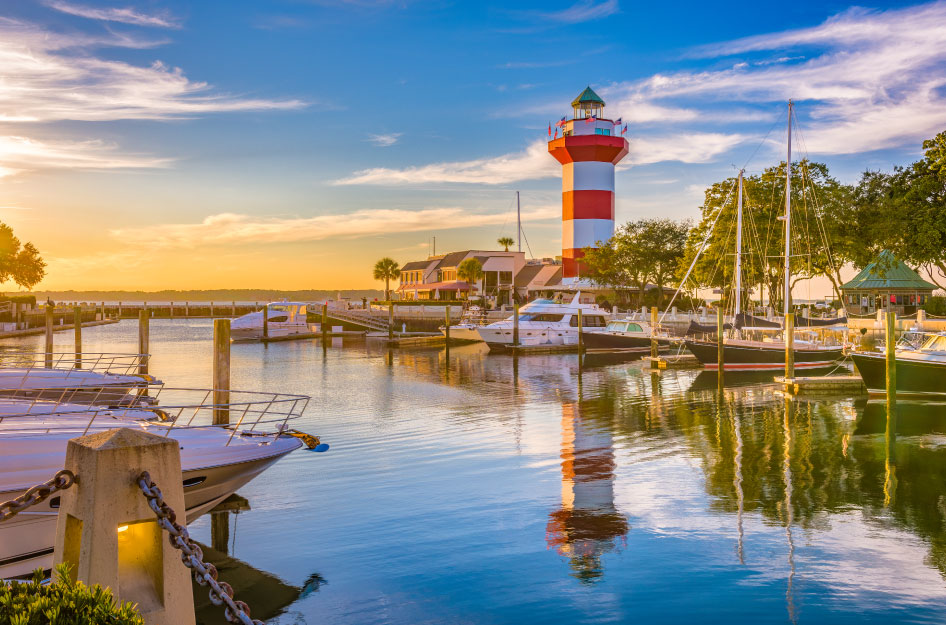Retiring in Hawaii: Pros, Cons, and the Best Places To Live in 2024
RetirementHawaii
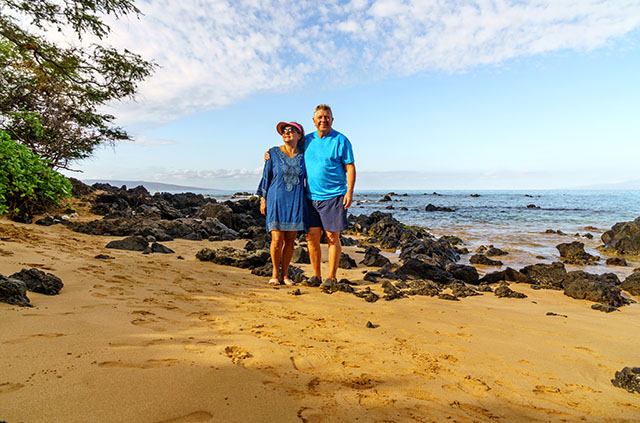
| Planning a move to Hawaii? Start by getting a quote from PODS. |
What Are the Benefits of Retiring in Hawaii?
The state of Hawaii offers the perfect escape from the ordinary hustle and bustle of life, with eight major islands of beaches, rainforests, and mountains. Sounds like a pretty great atmosphere to enjoy your golden years, right? The secret’s obviously out: Hawaii’s seniors comprise more than 20 percent of the total population of more than 1.45 million overall, with a median age across the islands of just about 41 — a smidge higher than the mainland U.S. And a financial bonus for retiring to Hawaii: Social Security retirement benefits and public pensions are not taxed.
But is Hawaii a good place to live overall? Let’s begin with some FAQs.
Retiring in Hawaii – FAQs
Q: How much do you need to retire in Hawaii?
A: That number depends on your lifestyle, of course, but generally speaking, to live comfortably in Hawaii, a single person without children needs at least $55,000 before taxes per year.
Q: Is Hawaii a good place to retire?
A: With beautiful views, so many fun things to do, friendly people, lots of retirement communities, and more, Hawaii is a great place to move to and call home in your golden years!
Q: Can you live in Hawaii on Social Security?
A: Knowing how to retire in Hawaii means knowing how to meticulously manage your post-retirement funds. With careful budgeting and a few compromises when it comes to housing and location, it may be possible to live in Hawaii on Social Security alone.
Q: Can you live in Hawaii with $3,000 a month?
A: That depends on several factors, such as your individual lifestyle, specific living expenses, and your location. Generally speaking, though, retirement in Hawaii with $3,000 per month would be a tight squeeze for one person. According to MIT’s Living Wage Calculator, an individual without children would need to make at least $55,000 before taxes each year (or at least $4,500 per month) to maintain the standard of living.
Q: What is the most affordable island to retire in Hawaii?
A: The Big Island is generally considered to be the most affordable retirement spot, mainly thanks to its lower cost of living compared to the other islands. A few other reasons: property taxes that are among the lowest in the state, a less-tourism-dependent economy, and slightly lower utilities and grocery costs. Another factor in considering the most affordable Hawaiian island to retire to is the diversity of the Big Island’s communities, from rural areas to small towns and even the larger town of Hilo — which means various options to suit varying budgets.
Q: Do retirees pay income tax in Hawaii?
A: Hawaii is moderately tax-friendly toward retirees, as it does not tax income from Social Security or public pensions. However, the state does tax income from retirement savings accounts and private pensions.
Q: What is the downside to living in Hawaii?
A: The high cost of living is the No. 1 challenge to retiring in Hawaii. The Aloha State has significantly higher prices than other states for just about everything from housing to gas to groceries. Other issues include limited access to family and friends on the mainland U.S., which may feel isolating to retirees, in particular. But the bottom line: The beauty, climate, and lifestyle of the Aloha State are well worth the tradeoff to many people — including retirees.
Q: Is it expensive to live in Hawaii?
A: In a word, yes. But there are islands, cities, and even some charming small towns that are less expensive than others. So just like with any decision, as you’re calculating your retirement income, expenses, and lifestyle needs, do your due diligence to find the right fit. There are plenty of options for retirees in Hawaii for just about every lifestyle.
Retiring in Hawaii: Pros and Cons
Hawaii is the only state in the U.S. made up of islands. Each of these islands — Hawai’i (the Big Island), Kauai, Oahu, and Maui — has its own special flavor, along with its own challenges. Most people are drawn to Hawaii’s islands because of the year-round warm temperatures and picturesque landscape, but there is so much more to these places than meets the eye.
Is Hawaii retirement friendly? Here’s a quick look at the pros and cons you can expect to experience when retiring in Hawaii.
Pro: Top-Tier Healthcare Facilities
Quality healthcare is very important for retirees, and in Hawaii, seniors have a variety of medical facilities and services dedicated to providing excellent care. Some of these facilities include The Queen's Health System and the Maui Memorial Medical Center, both with many primary care physicians trained to care for senior patients, in particular.
Con: Island Fever
For mainlanders looking to retire in Hawaii, you may find yourself in another part of the world, behind the wheel of a large automobile, with a beautiful house. And you may ask yourself, “Well, how did I get here?”
Forgive the Talking Heads reference, but we feel it’s apt. Mainlanders retiring in Hawaii may experience what locals call “island fever” or “rock fever” after retiring to Hawaii. This is basically homesickness turned up to 11. Hawaii is a gorgeous place, but it is very isolated from the rest of the world. Most of your everyday needs (groceries, gas) need to be shipped in from overseas, which drives up prices, and the brands you trust most may not be available at all. Retirement in Hawaii also means that any getaway starts with a minimum five-hour flight to Los Angeles and the rest of the continental U.S.
Pro: Natural Beauty and Warm Weather Year Round
The diverse landscapes of Hawaii — magnificent volcanoes, vast rainforests, and crystal-clear beaches — provide residents with captivating views. The state's outdoor recreation opportunities, including swimming, biking, and golf, also make it an ideal choice for people looking to get active and reduce stress in their retirement. And to top it off? The warm climate of Hawaii's islands, with year-round temps at a pleasantly toasty 75 to 85 degrees Fahrenheit.
Con: Extreme Weather Events
Yes, Hawaii is best associated with its stunning weather, but that beautiful location in the middle of the ocean means the threat of extreme weather events — particularly during the central Pacific hurricane season, June 1 to Nov. 30.
And did we mention volcanoes? There are six active volcanoes across the islands — the most active is Kilauea, which erupted almost continuously from 1983 to 2018. For the uninitiated, the gasses and particulate matter of volcano vents release VOG (volcanic smog) into the air. If you're planning to move to the Aloha State, it's important to check out the USGS flow hazard zones map to find out which areas may be risky.
Pro: Senior-Friendly Communities
The state of Hawaii highly values its senior-friendly communities. There are also numerous home care agencies in the state that can help patients with their daily needs and medication management, helping to foster an ongoing sense of independence.
Con: Limited Public Transportation
Although Honolulu does have a good public transportation system, there are only a few big cities besides the capital, which makes public transportation in the state very limited overall. The islands of Maui, Oahu, and Kauai have their own bus systems, but if you’re retiring in Hawaii, you will probably need a car to truly be able to travel and explore.
The Best Places To Retire in Hawaii
No matter which of the islands in the Aloha State you choose, there is something for everyone in each city, town, and neighborhood. From beautiful views to vibrant downtown areas to local activities and more, here are some of the best places to consider when you’re thinking of retiring in Hawaii. So grab your Mai Tai and let’s get to it.
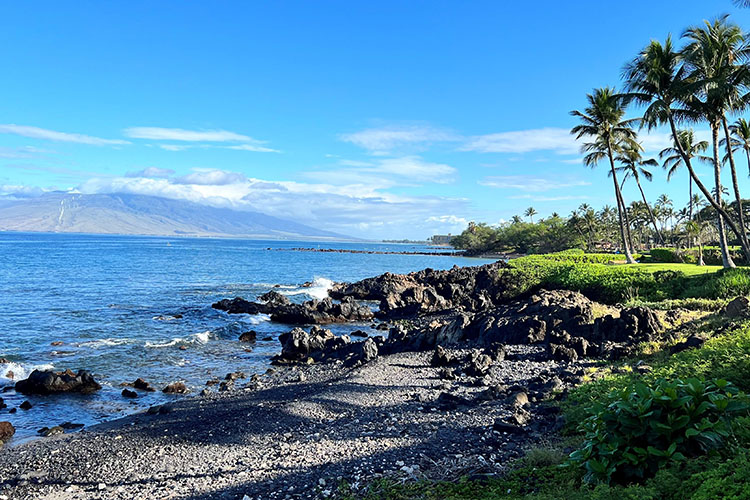
Beautiful black sand beaches are just one of many reasons Wailea was named the best place to retire in Hawaii in 2024.
1. Wailea, Maui
- Average rent (one-bedroom): $2,200
- Median home sale price: $2.28M
- Great for: Beautiful and unique views of Pacific Ocean, nature lovers, hiking trails
According to Niche, Wailea is the best place to retire in Hawaii in 2024 — and with good reason: The area is known for luxury. Among its many charms are some of the best views of the Pacific Ocean, elegant dining, and pristine beaches. Housing is upscale, as you might imagine, including waterfront living and high-end amenities at Wailea Beach Villas and spacious townhomes in the resort-style Ho’olei at Grand Wailea.
There are plenty of things to do in Wailea, whether you want to explore the local culture or just kick back and enjoy the sun. Golfers are in paradise and hikers have options including the Wailea Beach Path, the Wailea Oceanfront Boardwalk Trail, and the Pu’u Olai. Among the standout restaurants are Ferraro’s Bar e Ristorante (at the Four Seasons), which features Italian specialties with stunning ocean views. For a more casual vibe, try Monkeypod Kitchen, with farm-to-table cuisine and a lively atmosphere.
2. Maunawili, Oahu
- Average rent (one-bedroom): N/A
- Median home sale price: $1.3M
- Great for: Peaceful and secluded atmosphere, proximity to Kailua
The valley surrounding Maunawili features amazing views and a tranquil environment, making it an ideal place for those who prefer living somewhere a bit more secluded. You can easily head over to Kailua Town, however, for local shopping and dining establishments, or take a break to enjoy some sun at Kailua Beach Park. And the best part? Niche rates Maunawili as the best place to live in all of Hawaii!
3. Honolulu, Oahu
- Average rent (one-bedroom): $2,125
- Median home sale price: $475,000
- Great for: Diverse variety of neighborhoods, shopping, senior assisted-living facilities
Honolulu, Hawaii’s capital, is an ideal destination for retirees seeking a dynamic blend of resort-style amenities and modern, bustling city life. As the capital city, Honolulu is home to dozens of government offices, making it a hub for administrative and public services. The downtown business district is home to numerous landmarks, including the Hawaii Pacific University campus and the First Hawaiian Center, the second-tallest building in the state, which houses organizations including several bank headquarters.
Honolulu’s many diverse neighborhoods offer a variety of lifestyles for residents. In Waikiki, for instance, famous for its tourist district, the legendary nightlife scene is centered around Waikiki Beach. In Kahala, an upscale residential area known as Hawaii’s Beverly Hills, gorgeous beachfront estates are perched oceanside with stunning views. And in Kaimuki, residents are drawn to charming older homes, trendy boutiques, and popular dining destinations. Honolulu also provides the amenities and services people retiring in Hawaii need such as medical facilities and other conveniences, and there’s a variety of assisted-living options for residents looking for that level of care.
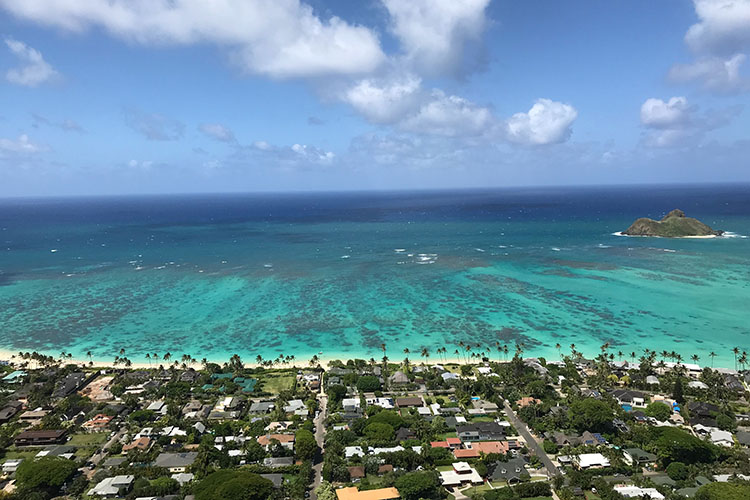
Residents in Kailua enjoy kayaking and paddleboarding with direct access to the ocean from their waterfront homes.
4. Kailua, Oahu
- Average rent (one-bedroom): $2,700
- Median home sale price: $1.48M
- Great for: Proximity to larger cities, walkability, farmer’s markets
About 30 minutes from Honolulu and Waikiki, the town of Kailua is home to an active and welcoming community, with various clubs and activities tailored to seniors — such as yoga classes, farmers markets, and art workshops. Volunteer opportunities are plentiful, too, with organizations including the Kailua Historical Society and the conservation-minded Kailua Beach Clean-Up and Hui o Ko’olaupoko. Local schools also are always open to volunteer for tutoring and extracurricular activities.
Homes in the Kailua area cater to a variety of preferences and budgets, from charming single-family homes in established neighborhoods to townhouses and villas. In the Enchanted Lake community of mostly single-family homes, residents enjoy kayaking and paddleboarding with direct access to the ocean from their waterfront properties. And in Poinciana Manor, condo residents are within walking distance to both the beach and Kailua’s charming downtown district.
Fun fact: President Barack Obama once had a house here.
5. Hilo, Big Island
- Average rent (one-bedroom): $1,600
- Median home sale price: $507,500
- Great for: Affordability, shopping, cultural activities
One of the Big Island's most affordable places to live is Hilo, which offers a moderate cost of living and is considered an ideal place to retire in Hawaii. Options for housing include a mix of historic plantation-style and modern single-family homes, often set in lush, tropical surroundings — and some with views of Hilo Bay. Neighborhoods like Kaumana offer larger lots and a more rural feel.
In addition to plenty of shopping opportunities, the downtown area of Hilo is home to attractions like the neoclassical Palace Theatre, a circa 1925 movie house, and a variety of arts organizations including the East Hawaii Cultural Center. Locals also take advantage of events at the local campus of the University of Hawaii.
6. Pearl City, Oahu
- Average rent (one-bedroom): $1,700
- Median home sale price: $986,000
- Great for: Close proximity to Honolulu, mainland feel
Pearl City is a suburban area that features many of the same features you would expect from a bedroom community on the mainland. And at about 20 minutes away from downtown Honolulu, Pearl City is an ideal location for people looking to live somewhat close to the capital.
With a family-friendly atmosphere as its hallmark, Pearl City has a mix of single-family homes, condos, and townhouses, with easy access to shopping centers such as Pearl Highlands Center and Pearlridge. Dining options include the usual suburban chain destinations plus local favorites like Thelma’s Restaurant, which specializes in Filipino dishes including adobo, pancit, and lumpia in a cozy, welcoming atmosphere. Parks and recreation are plentiful in the area, perfect for family gatherings, ball games, and hikes. And for history enthusiasts, the sobering — but beautiful — Pearl Harbor National Memorial is just a 15-minute drive away.
7. Mililani, Oahu
- Average rent (one-bedroom): $1,875
- Median home sale price: $820,000
- Great for: Recreational activities, golfing, surfing
Located in the central part of Oahu, Mililani Town was once an area of vast pineapple fields. Today, it’s a master-planned community with shopping centers, schools, more than a dozen cafes and restaurants, and seven recreational facilities including Kipapa Neighborhood Park,
There’s plenty to do in and around Mililani, such as teeing up at the nearby Mililani Golf Course or exploring the town of Haleiwa, a short drive away on Oahu's North Shore. You'll also find surf shops — essential for gear to ride the area’s legendary 30-foot waves. As for dining, Mililani offers chains and local favorites including the Rise & Shine Cafe, a beloved breakfast spot (get the blackened salmon eggs benedict).
8. Kahului, Maui
- Average rent (one-bedroom): N/A
- Median home sale price: $1.26M
- Great for: Easily accessible attractions, diversity, health and fitness
As the commercial center of Maui, Kahului has a more hectic feel compared with other areas on the island. But if you live in this area, you can easily access all of the conveniences of Maui such as the Kahului Airport, hospitals, and local grocery stores. Making your home in this area also puts you right in the middle of the island, which is convenient to pretty much everywhere.
Both renters and buyers retiring in Hawaii have options in Kahului. Neighborhoods including the master-planned Maui Lani offer family-friendly environments with well-maintained parks and lots of recreation. Shopping destinations like Queen Ka’ahumanu Center are conveniently located. But what makes this area special — like all of Hawaii — is its stunning surroundings. Just one example: Kanaha Beach Park, between Kahului Bay and Spreckelsville Beach, overlooks exquisite views of the West Maui Mountains.
9. Waimea, Big Island
- Average rent (one-bedroom): N/A
- Median home sale price: $1.32M
- Great for: Interesting attractions, annual cherry blossom festival, cooler temperatures
Located on the Big Island of Hawaii, Waimea is known for its paniolo, or Hawaiian cowboy, culture. It’s also home to the headquarters of the Canada-France-Hawaii Telescope and the W.M. Keck Observatory. And each year, the beautiful Cherry Blossom Heritage Festival proves to be a hit among local residents. Interestingly, because of the high elevation in Waimea (2,600 miles above sea level), you can expect to experience some cooler temperatures throughout the year, particularly in the wintertime.
Homes in Waimea trend toward upscale — at Waimea Parkside, for instance, many estates among the gated community’s rolling pastures feature expansive yards and views of the (inactive) Mauna Kea volcano and the Kohala Mountains.
10. Kapa’a, Kauai
- Average rent (one-bedroom): N/A
- Median home sale price: $855,000
- Great for: Shopping, families, community activities
Kauai is a charming, ideal destination for people looking to get away from the hustle and bustle. Which is not to say there’s nothing going on — it’s known as the Coconut Coast, after all. On the first Saturday of the month, residents can find live music, crafts, food, and more in Old Kap’a Town. The local shopping center at Wailua Kai is home to several restaurants and a variety of stores, and at Coconut Marketplace, you’ll find art pieces, jewelry, Hawaiian souvenirs, antiques, and more.
Housing options here include beachfront condos and townhouses, single-family homes, and quaint cottages, all set in neighborhoods collectively known for a relaxed, island vibe and, of course, beautiful views. Take a ride on the Kapaa Bike Path, a seven-mile coastal stretch along the east coast of Kauai.

Retiree-centered perks of living in Hawaii include tax incentives designed to help people settle into retirement comfortably.
How Much Money Do You Need To Retire in Hawaii?
The good news: In addition to all of the retiree-centered perks of living in Hawaii, the state's tax incentives are also designed to help people settle into retirement comfortably. The state does not tax the income generated from Social Security, which means retirees can keep a better hold of their full income. Hawaii also has relatively low sales tax rates. In fact, compared to the U.S. average sales tax rate of around 6.44 percent, Hawaii has one of the lowest rates in the country at 4.44 percent.
But comparing Hawaii to similar retirement destinations — Florida, for instance — you may be surprised to learn that the Aloha State’s cost of living is still quite a bit higher. Florida’s cost of living index is 103.1 (which is still above the U.S. average), and Hawaii’s cost of living index is a whopping 165.7, nearly 66 percent higher than the nationwide average!
A key factor in this drastic cost of living difference? Housing. While Florida is known for its relatively affordable housing (homeowners insurance crisis notwithstanding), this is Hawaii’s drawback. The average home price in Hawaii is $856,600 compared with about $400,000 in Florida.

Moving to Hawaii from the mainland U.S. means a few logistical challenges — including the Pacific Ocean — but PODS professionals are ready to assist you.
How Much Money Do You Need To Retire in Hawaii
Moving to and from Hawaii with PODS means you get local expertise and flexible, built-in storage. There are a few details to cover when you choose to move to Hawaii with PODS — the Pacific Ocean, for starters — and our team of professionals in Hawaii is ready to assist. Call (866) 504-4322 to get started.
Editor’s note: For ease of reading, monthly rental prices were rounded to the nearest $25 and home values were rounded to the nearest $100.

Your quote in 60 seconds
Get pricing tailored to your needs!


